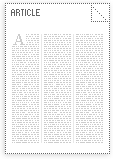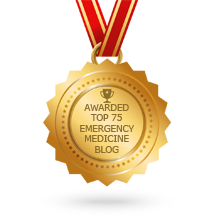Journal Club March 2017 - Herbal Medicines
/The availability of herbal and dietary supplements in the U.S. is increasing exponentially: 4,000 in 1994 to 80,000 today. Half of all adults have reported using at least one dietary supplement in the past month, but many do not openly relay this to their primary care physicians or emergency medicine physicians. This month’s journal club focused on the utilization of these products, their adverse events/complications as well as their “regulation”.
First and foremost, it is important to be familiar with the lack of strict regulations on herbal and dietary supplements and how this places the consumer at risk. These supplements are classified as food rather than a drug, hence the FDA does not require manufacturers to register their products with the agency, leaving the FDA with limited information on the number, types, and ingredients of products in the marketplace. Furthermore, product labels may not provide a full disclosure of the ingredients, their concentrations, purity and source. The Dietary Supplement Health and Education Act of 1994 simply defines dietary supplements and notes that they cannot be marketed for specific treatment or prevention of disease however many claim to alleviate symptoms and enhance health. Manufacturers of the supplements containing ingredients that were introduced after October 15, 1994 are required to notify the FDA prior to marketing and to provide rationale for the safety of the ingredients, such as historical use however, safety testing and FDA-approval are not required prior to the marketing of the dietary supplement. With that said, though the FDA is tasked with oversight of the supplements, they cannot have the manufacturer remove the supplement from the market unless it is found to be unsafe, i.e. results in a serious adverse event. The Dietary Supplement and Nonprescription Drug Consumer Protection Act was passed in 2007 and requires dietary supplements and over-the-counter drug manufacturers or distributors to report serious adverse events to the FDA, defined as events which result in hospitalization, significant disability, or death. Other adverse events are not required to be reported. This is alarming as there may be many other clinically significant adverse events that are not recognized and are not reported.
NAVARRO ET AL:
Navarro et al. (Hepatology 2017) reminded us that herbal and dietary supplements account for 20% of cases of hepatotoxicity in the United States. Green tea extract, anabolic steroids and multi-ingredient nutritional supplements are agents implicated in the majority of these cases. We must keep herbal and dietary supplements on our differential as the cause of hepatotoxicity in our patients. Whether a patient is presenting with fulminant liver failure or a mild bump in their LFTs, we should ask about supplement use.
GELLER ET AL:
Geller et al. (NEJM 2015) noted that visits to the emergency department with cardiovascular complaints in the young patient population such as palpitations, chest pain or tachycardia may be attributable to a dietary supplement such as weight-loss products (more commonly used in females) or performance-enhancing supplements (in males). Accidental ingestion by children was also a common presentation as child-resistant packaging is not required for dietary supplements other than those containing iron. In the older population (>65 yo), the most common complaint had to do with swallowing difficulties such as choking, pill-induced dysphagia or globus.
LEVY ET AL:
Levy et al. (Intern Emerg Med 2016) attempted to evaluate potentially dangerous interactions of dietary and herbal supplements with prescribed medications in their inpatient populations. They found that the most common potential side effect was increased bleeding. There were supplements that were also potentially hepatotoxic and that it is, again, important to obtain a good medication and supplement history from your patient and to check for possible interactions using an established database, i.e.The Natural Medicine Database http://naturaldatabase.therapeuticresearch.com/home.aspx?s=ND&cs=home
Summary:
In our discussion, it was evident that very few of us ask specifically about the use of dietary or herbal supplements with our patients. We concluded that when we do take this history, to remain open and nonjudgmental as many patients may be afraid to admit that they are taking many of these supplements.
Written by Kate Zimmerman, DO
Edited and Posted by Jeffrey A. Holmes, MD
ARTICLES REVIEWED
1. Navarro et al. Liver Injury From Herbal and Dietary Supplements. Hepatology, Vol. 65, No. 1, 2017. PMID: 27677775
2. Geller et al. Emergency Department Visits for Adverse Events Related to Dietary Supplements. The New England Journal of Medicine 373; 16 October 15, 2015
3. Levy et al. Potential drug interactions with dietary and herbal supplements during hospitalization. Intern Emerg Med DOI 10.1007/s1 1739-016-1548-x
4. Bryant et al. “Are You Taking Any Medications?” Herbal Toxicities And Their Manifestations In The ED. Emergency Medicine Practice Volume 7, Number 1 January 2005
DOWNLOAD ARTICLE SUMMARIES
Other FOAM Reviews on the Topic
1. Plant Toxicity on Life in the Fast Lane
2. Herbal Toxicity on the Poison Reviews














